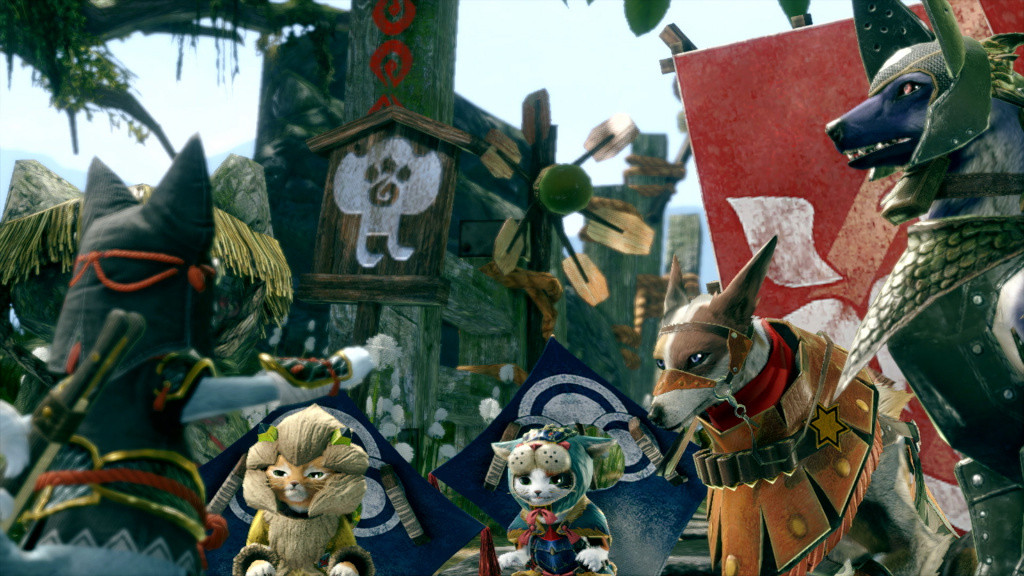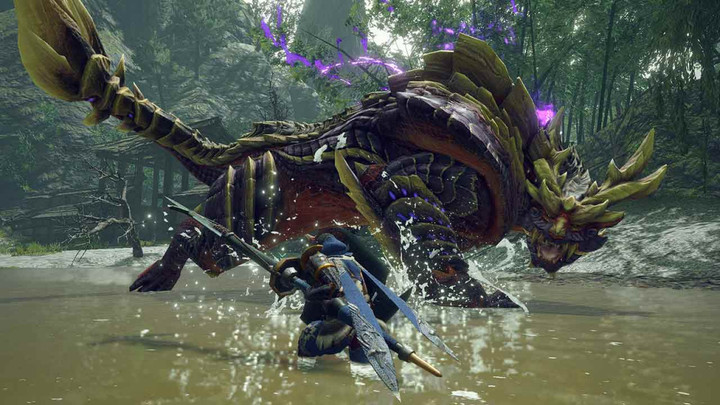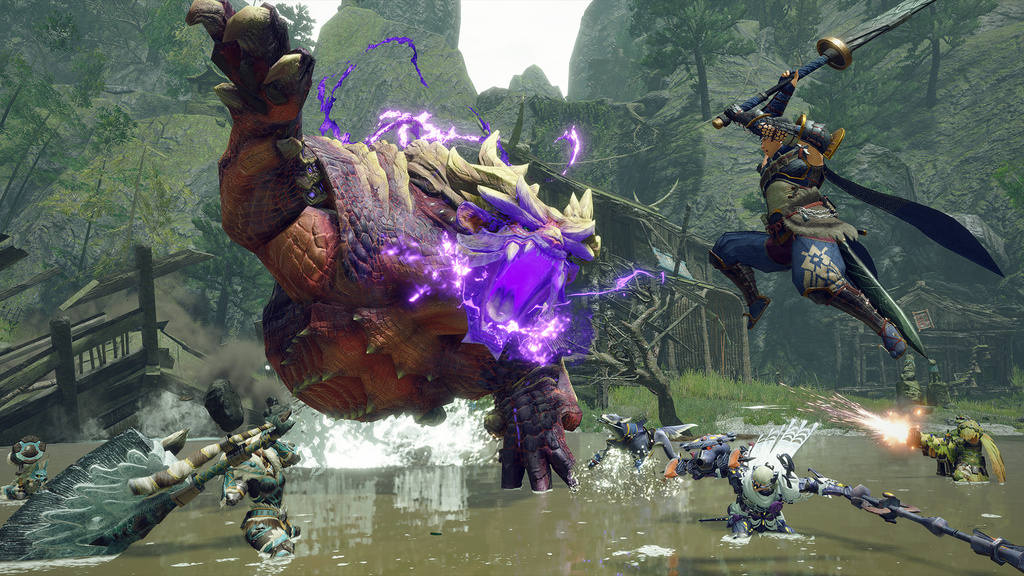For many, Monster Hunter is an enigma. The loop of killing monsters to earn gear to fight bigger monsters is the core of many popular RPGs, but Monster Hunter’s execution requires more patience than Diablo or Destiny. You have to acclimatise to the befuddling control scheme, learn what’s important within the overwhelming stacks of menus, prepare for each hunt with traps and items, and that’s before you take into account the endurance test battles where every monster has distinct attacks to counter.
Monster Hunter World, which became Capcom’s highest-selling game of all time, went a long way to streamlining the franchise’s appeal outside of Japan. With Monster Hunter Rise, there’s a sense anyone who didn’t click with past entries might have their best gateway yet into the phenomena, albeit with some caveats for long-time veterans.
So what’s changed? The most meaningful addition are Wirebugs — a movement mechanic which allows you to zip around the map. It gives combat and traversal an extra layer of versatility, where you can scale up walls, jump over monsters to avoid attacks, fling yourself long distances, and navigate around areas like never before. The change ups the pace across the board significantly, meaning you’re spending far less time wandering to find monsters or materials in the different biomes. Combat, while still closer to Dark Souls than Devil May Cry, feels flashier too — with the added verticality providing more options to play with.

The addition of Palamutes (basically massive dogs) also speed up the downtime. You’re no longer trudging on foot to beasts gallivanting across the map but riding your trusty companion, which cuts the travel time significantly. Coupled with the Wirebugs, these additions largely eliminate the worst aspects of Monster Hunter — putting greater focus on the excellent fights themselves.
There’s greater variety in that department too. Alongside the traditional quests, with different branches for both single-player and multiplayer, there’s Rampage mode. This is Monster Hunter goes tower defense, and it’s far better than that will ever sound. Here, you fend off hordes of monsters with various turrets and bombs before they can break through barriers to the village. It’s chaotic, rewards you with materials for upgrades, and leans into Monster Hunter’s goofier qualities, while acting as cathartic release if you simply want to hammer monsters with a machine cannon.

Performance wise, it’s impressive how an experience comparable to Monster Hunter World has been compacted onto the Switch. The environments look noticeably flatter, but the monster designs and lighting effects are just as vibrant despite the technological downgrade. The loading times, which have been a gripe in past Monster Hunter titles, are the fastest they’ve ever been too. It might not have the best visuals in the series but it’s as close as you could hope, with the snappier, faster experience giving it a leg-up over its graphically superior sibling.
Monster Hunter Rise does make double-edged decisions to alleviate its intimidating reputation. Quests in the early stages feel easier than before, giving you the power fantasy past titles made you grind hours to achieve. There’s a valid argument that Rise takes this to the extreme, with little in the way of challenging longevity which made Monster Hunter World so addictive for hundreds of hours. Capcom is set to release an April update however which adds new monsters and unlocks the level cap, so this could be rectified down the line.
At the moment though, Monster Hunter Rise's lower difficulty means you're not encouraged to engage in some of its rewarding systems. It wasn’t often that I felt compelled to upgrade, experiment with weapons or tackle monsters with specific items, because there wasn’t a difficulty spike which forced me to readdress my play-style.
You’ll become more skilled at combat and pulling off tricks using Wirebugs throughout the main village quests, but I didn’t feel pressed to engage in searching for food recipes, or farming materials through the buddy side activities like Meowcenaries, where you'll find Monster Hunter's more bonkers charms. This gripe will largely depend on your own curiosity, but it’s something I wish was weaved better through the first 20 hours of Rise.

 No ads, our video library,
No ads, our video library,


